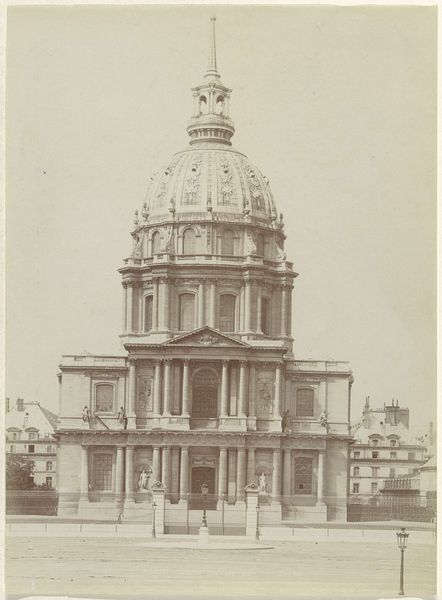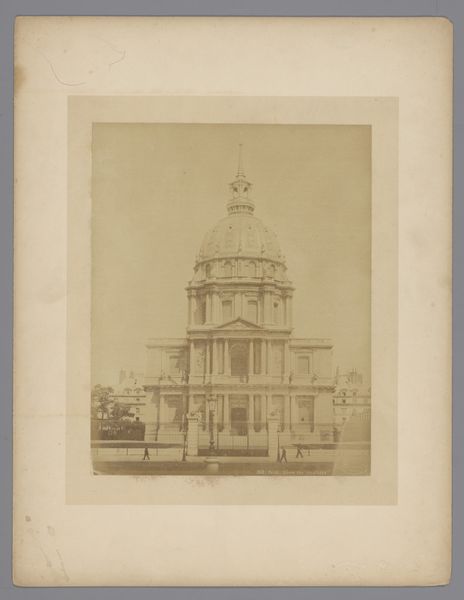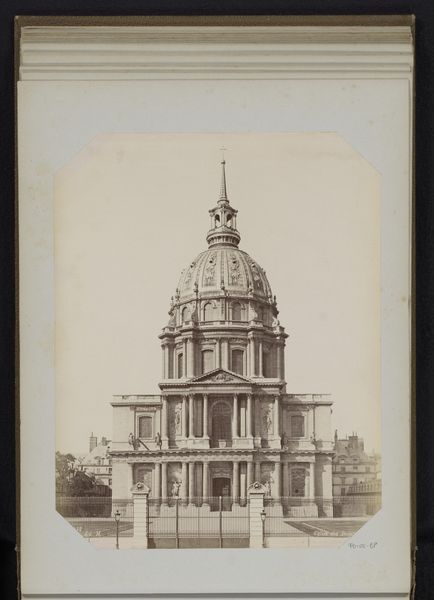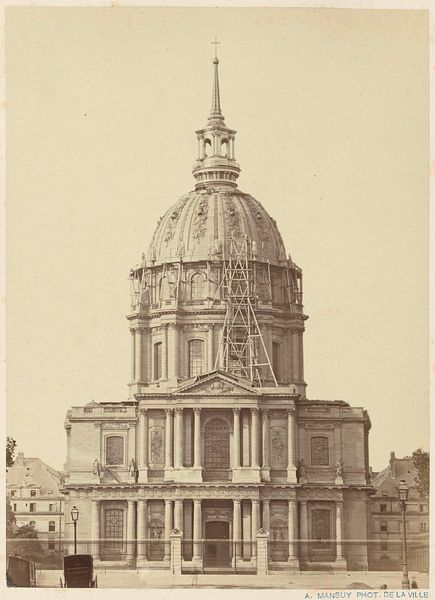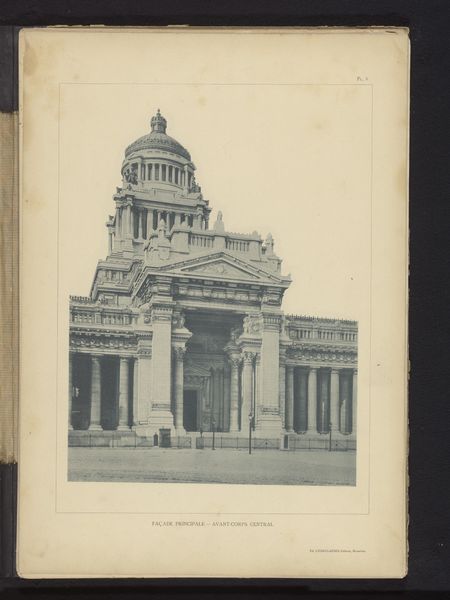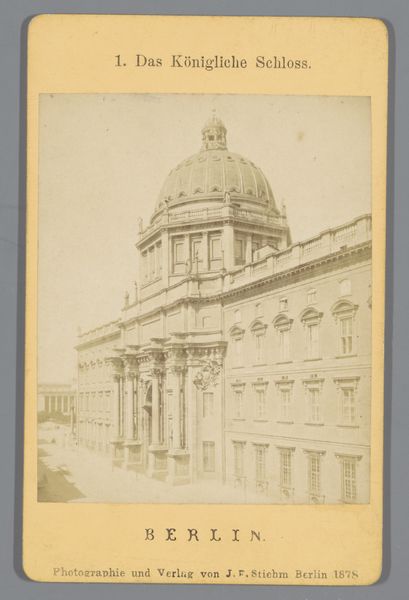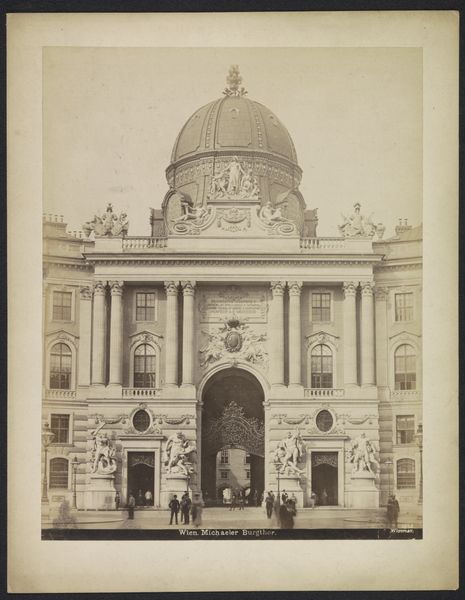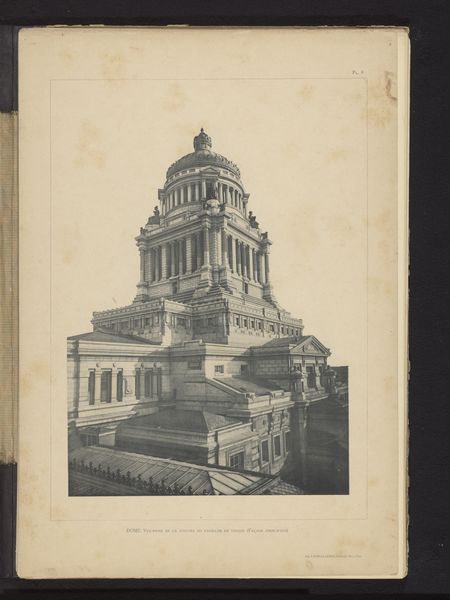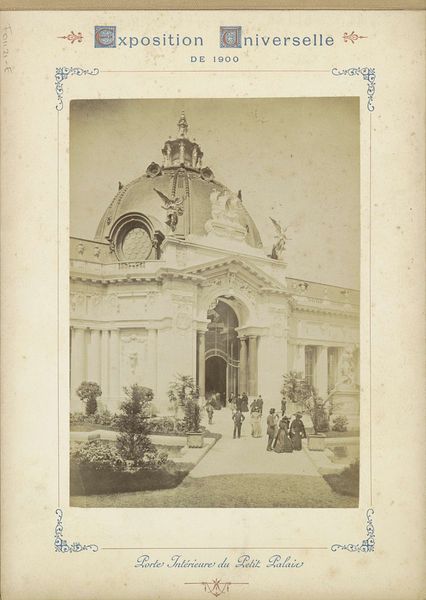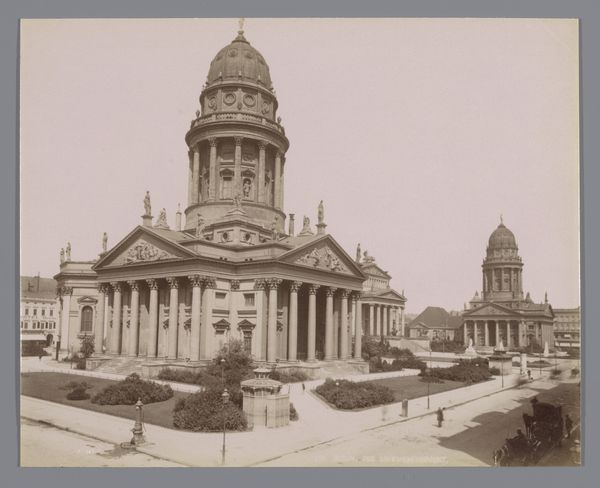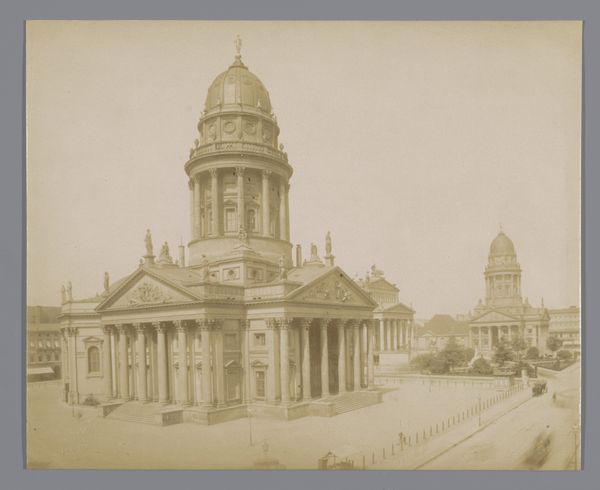
print, photography
# print
#
photography
#
orientalism
#
cityscape
Dimensions: height 280 mm, width 212 mm, height 329 mm, width 226 mm
Copyright: Rijks Museum: Open Domain
Curator: Here we have a photographic print titled "Hôtel des Invalides, Parijs" dating roughly between 1887 and 1900 by X phot. Editor: It has a wonderfully sepia tone. It’s architecturally quite imposing, all symmetry and clear divisions of space, yet it feels rather…muted somehow. Curator: I think it’s important to consider the political function the Hôtel des Invalides represents. Commissioned by Louis XIV, it served as a home and hospital for veterans, solidifying an image of centralized power that attempted to control the narrative surrounding military service and sacrifice. Editor: Ah, right. One can also examine the dome, which dominates the composition. Its shape, those nested curves, draw the eye upwards. It speaks of permanence and power. The gradations in light and shadow lend the surface texture, animating an otherwise static form. Curator: Yes, but it's also critical to think about who *isn't* in the photograph. The labor of constructing such a monumental building, for instance, often gets erased. So do the broader social impacts of militarization implied in its function. Consider what the hospital signifies – a perpetual aftermath of war and the bodies irrevocably changed by violence, all sanctioned by those in power. Editor: The lone carriage visible at the building's side offers scale and, perhaps unintentionally, enhances the building’s solemn atmosphere. Notice, too, how the photographer centered the building perfectly, which emphasizes its grandeur. It invites us to observe and interpret the lines of this grand building. Curator: Precisely. But we must acknowledge the power dynamics implicit in architectural photography from this period, a dynamic inherently linked with the creation and legitimization of political institutions. It encourages a particular gaze. Editor: You’ve certainly shifted my perception; I now notice both the starkness and splendor and wonder about the political subtexts that exist beneath that polished exterior. Curator: Absolutely. The interplay between aesthetics and historical realities is exactly where meaningful dialogues about art should take us.
Comments
No comments
Be the first to comment and join the conversation on the ultimate creative platform.
